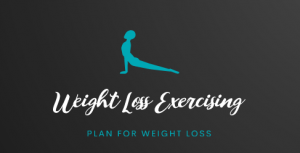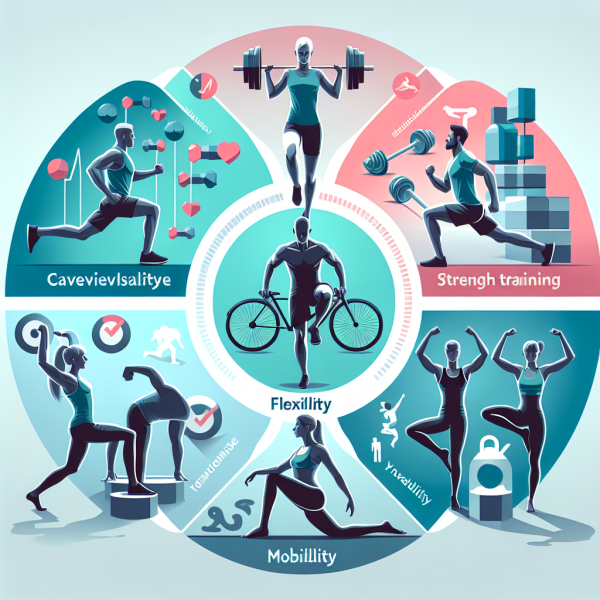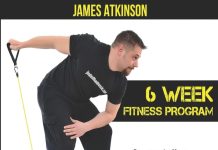Are you looking to create a fitness routine that targets all areas of your body? Look no further! In this article, you will discover the secrets to building a balanced weekly workout routine. Whether you’re a beginner or a seasoned fitness enthusiast, these tips will guide you in creating a workout plan that combines cardio, strength training, and flexibility exercises. Say goodbye to boring and monotonous workouts and hello to a well-rounded fitness regimen that will keep you motivated and energized. Get ready to take your fitness journey to the next level and achieve your goals.
Review contents
Identify Your Goals
To build a balanced weekly workout routine, the first step is to identify your fitness goals. Determine what you want to achieve with your workouts, whether it’s weight loss, muscle gain, improved cardiovascular health, or overall fitness. Your primary fitness objectives will be the driving force behind your workout routine and will dictate the types of exercises you choose.
In addition to your primary goals, it’s also essential to consider secondary goals for variety and well-roundedness. Secondary goals can include things like improving flexibility, enhancing balance and coordination, or targeting specific muscle groups. By incorporating secondary goals into your routine, you can ensure that you address all aspects of fitness and create a comprehensive workout plan.
Choose Your Workout Days
Once you have identified your goals, the next step is to decide on the number of workout days per week that will best fit your schedule and fitness level. This will vary for each individual, but it’s generally recommended to aim for at least three to five workout days per week, allowing for adequate rest and recovery.
While it’s important to be consistent with your workouts, it’s equally essential to include rest days in your routine. Rest days are crucial to allow your body to recover and repair itself, reducing the risk of overtraining and injury. Listen to your body and take rest days when needed to honor its natural recovery process.
Select the Right Types of Exercises
To build a well-rounded workout routine, it’s important to include a variety of exercises that target different aspects of fitness. This will help you improve your overall strength, cardiovascular endurance, flexibility, and coordination. Consider including the following types of exercises in your routine:
Include cardiovascular exercises
Cardiovascular exercises, such as running, cycling, swimming, or brisk walking, are essential for improving heart health, burning calories, and increasing stamina. Aim for at least 150 minutes of moderate-intensity cardio or 75 minutes of vigorous-intensity cardio each week, spread out over your workout days.
Incorporate strength training
Strength training exercises, such as lifting weights, using resistance bands, or doing bodyweight exercises, are crucial for building muscle strength and tone. Incorporate strength training exercises at least two to three days a week, targeting different muscle groups each session.
Integrate flexibility and mobility workouts
Flexibility and mobility workouts, such as yoga or Pilates, are beneficial for improving range of motion, preventing injuries, and relieving muscle tension. Dedicate specific workout days to focus on stretching and mobility exercises, or incorporate them into your warm-up and cooldown routines.
Consider adding balance and coordination exercises
Balance and coordination exercises, such as yoga poses, tai chi, or balance boards, can help improve stability and prevent falls. Include exercises that challenge your balance and coordination skills at least once or twice a week, either as stand-alone sessions or combined with other workouts.
Distribute Exercise Categories
Once you have selected the types of exercises you want to include in your routine, it’s important to distribute them throughout the week to maintain a balanced workout schedule. Consider the following factors when distributing exercise categories:
Allocate specific days for each exercise category
To ensure that all aspects of fitness are addressed, allocate specific workout days for each exercise category. For example, you can have dedicated cardiovascular exercise days, strength training days, flexibility and mobility days, and balance and coordination days.
Determine the frequency of each category
Consider how often you want to perform each exercise category within a week. For cardiovascular exercises, you may choose to do them on most workout days. Strength training can be done two to three times a week, targeting different muscle groups each session. Flexibility, mobility, and balance exercises can be included in every workout or on dedicated days.
Maintain a balanced ratio between categories
Strive to maintain a balanced ratio between the different exercise categories to avoid overemphasizing one aspect of fitness at the expense of others. For example, if you have three workout days per week, you may allocate one day to cardiovascular exercises, one day to strength training, and one day to flexibility and balance exercises.
Plan Your Weekly Schedule
With the exercise categories and their distribution in mind, it’s time to plan your weekly workout schedule. Creating a weekly workout calendar will help you stay organized and committed to your routine.
Create a weekly workout calendar
Get a calendar or use a digital planner to create your weekly workout schedule. Choose a day and time for each workout session and mark it on the calendar. Having a visual representation of your schedule will make it easier to stick to your plan.
Assign exercise categories to different days
Based on the exercise categories you have selected and their frequency, assign each category to specific workout days on your calendar. Consider the workload and intensity of each category when determining the order and spacing of your workouts.
Consider time constraints and personal preferences
Take into account your personal schedule and commitments when planning your workouts. Consider the available time slots for exercise, whether it’s early in the morning, during lunch breaks, or in the evening. Additionally, factor in your personal preferences for specific exercises or workout environments to ensure your routine is enjoyable and sustainable.
Prioritize Warm-Up and Cool-Down
To maximize the effectiveness of your workouts and prevent injuries, it’s important to prioritize warm-up and cool-down activities. These components prepare your body for exercise and promote proper recovery afterward.
Allocate time for warm-up exercises
Before every workout session, allocate sufficient time for a proper warm-up. This can include light cardio exercises, such as jogging in place or jumping jacks, to increase your heart rate and warm up the muscles.
Include dynamic stretches to prepare the body
Within the warm-up period, incorporate dynamic stretches that focus on the major muscle groups you will be using during your workout. Dynamic stretches involve controlled movements that gradually increase the range of motion and flexibility.
Provide time for cooldown activities
At the end of each workout, allow time for a cool-down period. This helps your body gradually return to its resting state and prevents blood pooling in the lower extremities. The cool-down can consist of low-intensity cardio exercises, such as walking, and gentle stretching.
Include static stretches to promote recovery
During the cooldown period, include static stretching exercises that target the muscles you worked during your workout. Hold each stretch for about 15-30 seconds, focusing on maintaining good form and breathing deeply to promote relaxation and recovery.
Account for Progressive Overload
To continue seeing progress and improvements in your fitness, it’s important to account for progressive overload in your workouts. Progressive overload involves gradually increasing the intensity, duration, or frequency of your exercises over time.
Gradually increase the intensity of workouts
As your fitness level improves, challenge yourself by gradually increasing the intensity of your workouts. This can be done by increasing the weight, resistance, or speed of your exercises, or by adding more repetitions or sets.
Implement progressive overload to challenge the body
Incorporate progressive overload techniques into your strength training sessions. For example, you can increase the weight you lift, decrease the rest time between sets, or try more advanced variations of exercises to continuously challenge your muscles.
Avoid excessive or sudden intensity jumps
While progressive overload is essential, it’s important to avoid excessive or sudden intensity jumps that may lead to injuries or burnout. Increase the intensity gradually and listen to your body’s signals to avoid overexertion.
Consider Cross Training
To prevent boredom and reap the benefits of different fitness modalities, consider incorporating cross training into your workout routine. Cross training involves engaging in different types of activities to work different muscle groups and challenge your body in new ways.
Include different activities to prevent boredom
Choose activities that you enjoy and that complement your primary fitness goals. This could include activities such as swimming, dancing, hiking, or participating in group fitness classes. By adding variety to your routine, you’ll stay engaged and motivated.
Benefit from different fitness modalities
By engaging in different fitness modalities, you’ll benefit from their unique advantages. For example, swimming is a low-impact exercise that provides a full-body workout, while dancing can improve coordination and cardiovascular endurance. Incorporating a mix of activities helps you develop a well-rounded fitness level.
Reduce the risk of overuse injuries
Cross training also helps reduce the risk of overuse injuries that can occur when constantly repeating the same movement patterns. By incorporating different activities, you give your body a chance to rest certain muscle groups while strengthening others, promoting overall balance and reducing the risk of injuries.
Listen to Your Body
As you embark on your weekly workout routine, it’s crucial to listen to your body and pay attention to its signals. Your body will provide guidance on when to push harder, when to back off, and when to make modifications to your workouts.
Pay attention to signs of fatigue and overtraining
Be mindful of any signs of fatigue, such as excessive soreness, persistent fatigue, or decreased performance. These can be indicators of overtraining or inadequate recovery. Pay attention to your energy levels and adjust your workout intensity or schedule accordingly to avoid burnout.
Modify your workouts based on physical cues
If you experience discomfort or pain during a specific exercise, modify the movement or choose alternative exercises that target the same muscle groups. This allows you to continue working out while avoiding potential injuries or aggravation.
Allow for proper rest and recovery
Rest and recovery are just as important as the exercise itself. Make sure to allocate enough time for rest days and prioritize quality sleep. Adequate rest and recovery time allow your muscles to repair and grow stronger, improving overall fitness and preventing overtraining.
Track and Assess Progress
To stay motivated and ensure that your routine is effective, tracking and assessing your progress is essential. By monitoring your performance and improvements, you can make necessary adjustments to your routine and celebrate your achievements.
Monitor your performance and improvements
Keep track of key performance indicators such as weight lifted, distance covered, or time taken to complete exercises. You can create a workout journal or use fitness tracking apps to record and analyze your progress over time.
Keep a workout journal or use fitness tracking apps
A workout journal provides a tangible record of your workouts, allowing you to reflect on your achievements and set new goals. Fitness tracking apps offer additional features such as workout reminders, progress graphs, and personalized training plans.
Make adjustments to your routine as needed
Regularly assess your progress and make necessary adjustments to your routine. As you become stronger and more experienced, you may need to increase the intensity or variety of your exercises to continue challenging your body and achieving your goals.
Building a balanced weekly workout routine is a dynamic process that requires careful planning, flexibility, and the ability to listen to your body. By identifying your goals, selecting the right types of exercises, distributing exercise categories effectively, and prioritizing warm-up and cool-down activities, you can create a routine that is tailored to your needs and promotes overall fitness and well-being. Stay committed, listen to your body, and track your progress to ensure that you continually evolve and achieve your fitness goals.




























